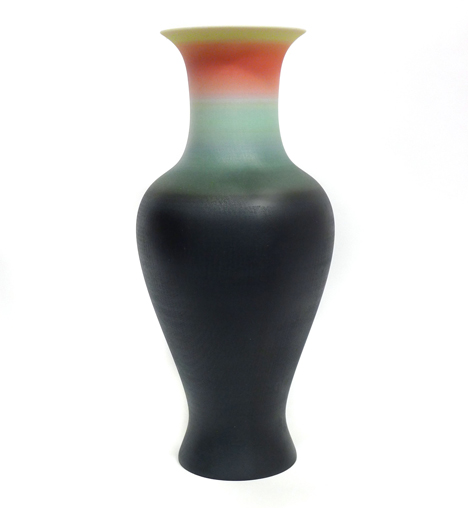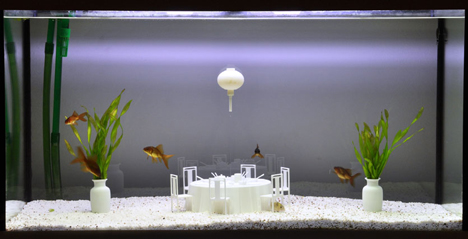Droog copies China
News: Dutch design collective Droog will turn the notion of piracy in China on its head by unveiling its own copies of Chinese objects in a Guangzhou shopping centre next week.
While Chinese companies and the government strive to shed their copycat reputation, The New Original project suggests that the process of imitation can be more than mere replication when small adaptations are made to the knock-off goods, potentially driving innovation.
Exhibited items will include a traditional Chinese tea pot with a more robust handle and an inverted Chinese restaurant where a fish tank contains the dining area.

Top: Tea Pot by Richard Hutten
Above: Family Vase by Studio Droog
The show will feature 26 objects that were created in Shenzhen, which Droog calls "the epicentre of copycat culture", as part of a workshop organised by the firm's experimental arm Droog Lab. Participating designers designers included Studio Droog, Richard Hutten and the late Ed Annink of the Netherlands, plus Stanley Wong and Urbanus of China.
“We have reached a level of saturation in design and in the market, that it’s time to think more intelligently about what to do with the surplus, and use it in the design process. We should take better advantage of our collective intelligence,” says Droog co-founder and director Renny Ramakers. “Imitation can also be inspiration.”

Above: Fish Restaurant by Studio Droog
The New Original will be on show at Hi space, zhen Jia shopping mall, 4th floor, No. 228 Tianhe Road, Guangzhou, China, from 9 March to 9 April.
The show is organised in partnership with Today Art Museum of Beijing and OCT Art and Design Gallery of Shenzhen.
Other news about copying in design includes a building designed by Zaha Hadid for Beijing that's been copied by a developer in Chongqing. At the Venice Architecture Biennale last year, Dezeen columnist Sam Jacob of FAT argued that copying is fundamental to how architecture develops.
See all our stories about copying in design »
See all our stories about design in China »
See all our stories about Droog »